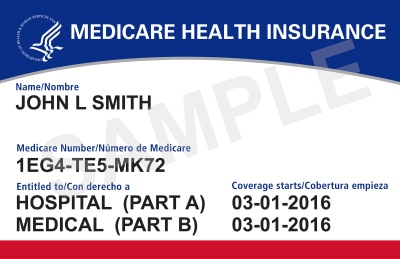Vincent Thrasher, the pioneering founder of Over65InsuranceOptions, has an impressive 20-year tenure in the insurance industry. His in-depth expertise spans the entire spectrum of senior...Read more
If you’re nearing the age of 65 or have a qualifying disability, you may be wondering how to get Medicare insurance. Medicare is a federal health insurance program that provides coverage for millions of Americans, but navigating the enrollment process can be overwhelming. In this article, we’ll explore the different parts of Medicare, eligibility requirements, and how to enroll to help you get the coverage you need.
You can get Medicare insurance by meeting the eligibility criteria. To be eligible, you must be 65 years or older or have a qualifying disability. You can enroll in Medicare through the Social Security Administration website or by visiting your local Social Security office. You can also enroll during the annual open enrollment period from October 15 to December 7.

How Can I Get Medicare Insurance?
Medicare insurance is a federal health insurance program for people who are 65 years or older, and for those with disabilities or end-stage renal disease. If you are eligible for Medicare, you might be wondering how to enroll in the program. In this article, we will explain how you can get Medicare insurance.
1. Understand the Different Parts of Medicare
There are four parts of Medicare: Part A, Part B, Part C, and Part D. Part A covers hospitalization costs, while Part B covers medical services such as doctor visits and lab tests. Part C, also known as Medicare Advantage, is a combination of Parts A and B, and may include additional benefits like dental and vision coverage. Part D covers prescription drugs. It is important to understand the different parts of Medicare so you can determine which parts you need.
To enroll in Medicare Part A and/or Part B, you can visit your local Social Security office or apply online at the Social Security Administration website. If you are already receiving Social Security benefits, you will automatically be enrolled in Medicare Parts A and B.
2. Determine When You Can Enroll
You can enroll in Medicare during the Initial Enrollment Period, which is a seven-month period that begins three months before your 65th birthday and ends three months after your birthday. If you miss this initial enrollment period, you can enroll during the General Enrollment Period, which runs from January 1 to March 31 each year. However, you may have to pay a penalty for late enrollment.
If you are still working and have health insurance through your employer, you may be able to delay enrolling in Medicare without penalty. When you retire and lose your employer health insurance, you can enroll in Medicare during a Special Enrollment Period.
3. Compare Medicare Advantage Plans
Medicare Advantage plans are offered by private insurance companies and provide additional benefits beyond Original Medicare. To enroll in a Medicare Advantage plan, you must have Medicare Parts A and B. You can compare plans and enroll in one that best fits your needs during the Annual Enrollment Period, which runs from October 15 to December 7 each year.
When comparing Medicare Advantage plans, you should consider the plan’s monthly premium, deductible, copayments, and out-of-pocket maximum. You should also check if your doctors and hospitals are in the plan’s network.
4. Consider Medicare Supplement Plans
Medicare Supplement plans, also known as Medigap plans, help pay for costs that Original Medicare does not cover, such as deductibles, copayments, and coinsurance. To enroll in a Medicare Supplement plan, you must have Medicare Parts A and B.
There are ten different Medicare Supplement plans, each offering different levels of coverage. When choosing a Medigap plan, you should consider the monthly premium, the plan’s coverage, and the insurance company’s reputation.
5. Understand Medicare Prescription Drug Coverage
Medicare Part D covers prescription drugs. You can enroll in a Part D plan during the Initial Enrollment Period or the Annual Enrollment Period. If you do not enroll in a Part D plan when you are first eligible, you may have to pay a penalty when you do enroll.
When choosing a Part D plan, you should consider the plan’s monthly premium, deductible, copayments, and the drugs that are covered. You should also check if your pharmacy is in the plan’s network.
6. Know the Costs of Medicare
Medicare has different costs depending on which parts you enroll in. Medicare Part A is usually free, but you may have to pay a deductible and coinsurance. Medicare Part B has a monthly premium, deductible, and coinsurance. Medicare Advantage and Medicare Supplement plans also have different costs.
It is important to understand the costs of Medicare so you can plan for your healthcare expenses in retirement.
7. Learn About Extra Help Programs
If you have limited income and resources, you may qualify for Extra Help programs that can help pay for Medicare premiums, deductibles, and prescription drug costs. To see if you qualify, you can apply at the Social Security Administration website or visit your local Social Security office.
8. Understand the Coverage Gap
The Medicare Part D coverage gap, also known as the “donut hole,” is a temporary limit on what your prescription drug plan will cover. Once you and your plan have spent a certain amount on prescription drugs, you may enter the coverage gap and have to pay more for your drugs until you reach catastrophic coverage.
To avoid or reduce the impact of the coverage gap, you can choose a Part D plan that has a coverage gap discount or enroll in a Medicare Advantage plan that includes prescription drug coverage.
9. Know Your Rights and Protections
Medicare has certain rights and protections for beneficiaries. You have the right to appeal decisions about your Medicare coverage, and you have the right to file a complaint if you have a problem with your healthcare services.
You also have protections against discrimination, such as being denied coverage because of your race, color, national origin, disability, or age.
10. Get Help with Medicare
If you need help understanding Medicare or enrolling in the program, you can get help from various sources. You can contact your State Health Insurance Assistance Program (SHIP), which provides free counseling and assistance with Medicare. You can also contact your local Area Agency on Aging or a licensed insurance agent who specializes in Medicare.
In conclusion, getting Medicare insurance involves understanding the different parts of Medicare, determining when you can enroll, comparing plans, considering supplemental coverage, knowing the costs, and understanding your rights and protections. With the right information and resources, you can make informed decisions about your healthcare coverage in retirement.
Contents
Frequently Asked Questions
What is Medicare Insurance?
Medicare is a federal health insurance program for people who are 65 or older, certain younger people with disabilities, and people with End-Stage Renal Disease (permanent kidney failure requiring dialysis or a transplant, sometimes called ESRD). The program helps with the cost of health care, but it does not cover all medical expenses or the cost of most long-term care.
Medicare has four parts: Part A is hospital insurance; Part B is medical insurance; Part C is Medicare Advantage, which offers health plan options run by Medicare-approved private insurance companies; and Part D covers prescription drugs.
Who is eligible for Medicare?
To be eligible for Medicare, you must be a U.S. citizen or a legal resident who has lived in the United States for at least five years and meet one of the following criteria:
– You are 65 years old or older
– You are under 65 with a disability or end-stage renal disease
– You have amyotrophic lateral sclerosis (ALS), also known as Lou Gehrig’s disease
How do I enroll in Medicare?
If you are already receiving Social Security benefits, you will automatically be enrolled in Medicare Parts A and B when you turn 65. If you are not receiving Social Security benefits, you will need to contact the Social Security Administration to apply for Medicare.
You can enroll in Medicare during your Initial Enrollment Period, which begins three months before the month you turn 65 and ends three months after the month you turn 65. If you miss your Initial Enrollment Period, you can enroll during the General Enrollment Period, which runs from January 1 to March 31 each year.
What does Medicare cover?
Medicare covers a wide range of medical services, including hospital stays, doctor visits, lab tests, X-rays, preventive care, and prescription drugs. However, there are some services that Medicare does not cover, such as dental care, eyeglasses, hearing aids, and long-term care.
It’s important to note that Medicare does not cover all medical expenses, and you may still be responsible for deductibles, copayments, and coinsurance.
How much does Medicare cost?
The cost of Medicare depends on which parts you enroll in and your income. Part A is generally free, but you will need to pay a premium for Part B. The standard premium for Part B in 2021 is $148.50 per month, but higher-income individuals may have to pay more.
If you choose to enroll in a Medicare Advantage plan or a Part D prescription drug plan, you will also have to pay a premium. It’s important to review your options carefully and choose a plan that fits your budget and healthcare needs.
In conclusion, getting Medicare insurance can be a simple and straightforward process if you know the steps to take. Start by understanding the different parts of Medicare and what they cover. This will help you determine which plan is right for you based on your healthcare needs and budget.
Next, gather the necessary information and documents needed to apply for Medicare insurance. This may include your social security number, proof of citizenship or legal residency, and income information.
Finally, consider working with a licensed insurance agent who specializes in Medicare to help guide you through the enrollment process and answer any questions you may have. With these steps in mind, you can confidently navigate the Medicare system and secure the coverage you need for a healthier future.
Vincent Thrasher, the pioneering founder of Over65InsuranceOptions, has an impressive 20-year tenure in the insurance industry. His in-depth expertise spans the entire spectrum of senior insurance, encompassing Medicare, Medigap, long-term care insurance, life insurance, and dental, vision, and hearing insurance. Vincent's unwavering passion for guiding seniors through the intricate insurance landscape and crafting customized solutions to address their individual needs has earned Over65InsuranceOptions an esteemed reputation as a dependable ally for seniors nationwide.
More Posts

